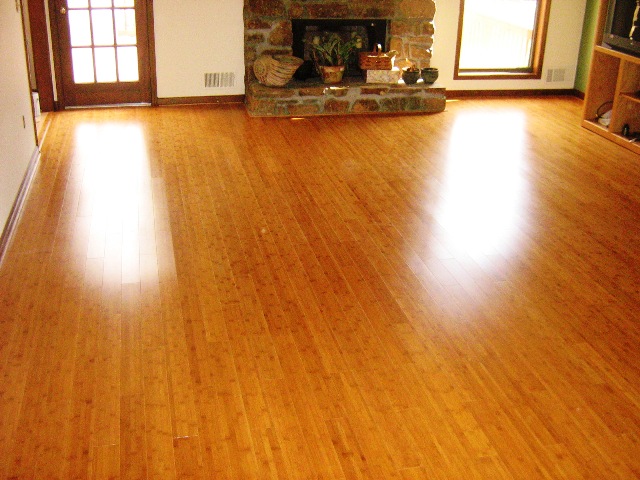 If you love hardwood flooring and are thinking about placing some in your home, you may want to consider bamboo flooring. It is a great option for homes that is simple to clean, has anti-microbial properties, and is environmentally friendly. Bamboo grows quicker than any other type of tree. Unlike some trees that take 15 to 100+ years to grow, bamboo can be harvested every 5-7 years. The minimum aged trees used for most bamboo flooring is three years. The hardness of the flooring usually depends on what type of bamboo is used as well as how long it is allowed to grow before it is harvested. The most commonly used bamboo species for flooring is moso (in Japan) and mao zhu (in China).
If you love hardwood flooring and are thinking about placing some in your home, you may want to consider bamboo flooring. It is a great option for homes that is simple to clean, has anti-microbial properties, and is environmentally friendly. Bamboo grows quicker than any other type of tree. Unlike some trees that take 15 to 100+ years to grow, bamboo can be harvested every 5-7 years. The minimum aged trees used for most bamboo flooring is three years. The hardness of the flooring usually depends on what type of bamboo is used as well as how long it is allowed to grow before it is harvested. The most commonly used bamboo species for flooring is moso (in Japan) and mao zhu (in China).
Another benefit of bamboo is that it produces more oxygen that a hardwood forest of the same size. It also sequesters up to 12 tons of carbon dioxide per 100 acres, so it not only provides more oxygen, but also refreshes our air. It can be grown in soil that has been damaged and requires little fertilization and pesticides. Bamboo flooring is said to be resistant to insects and moisture.
(This image is licensed under the Creative Commons Attribution ShareAlike 3.0 License. In short: you are free to share and make derivative works of the file under the conditions that you appropriately attribute it, and that you distribute it only under a license identical to this one. Official license.)
The process of making bamboo flooring starts with the manufacturer slicing the poles into strips. Those strips are then destarched through a boiling process. Once they are glued into boards, they are then milled. It is during milling when the preservation treatment is applied. During the lamination process, some bamboo flooring receives a urea-formaldehyde (UF) adhesive. However, if you shop around, you can find bamboo that doesn’t use formaldehyde.
If you are concerned about color, don’t be. Bamboo is naturally a light color, but if the bamboo is carbonized during the pressure-steaming process, it takes on a darker, amber color. Dyes can also be used to achieve the color desired, although this may be somewhat toxic and nullify the whole “green living” option.

